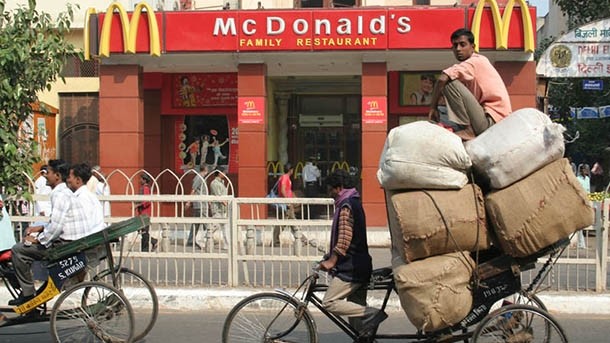Fast food growth rate set to be a whopper in India

According to a report published by Crisil, the Indian unit of Standard & Poor’s rating agency, the QSR market will be worth around Rs70bn (US$1.13bn) by the end of 2016, from its current value of Rs34bn (US$549m).
It says the growth will driven largely by new store additions, although during this period, same-store-sales are expected to decline considerably thanks to intensifying competition in tier I cities coupled with the economic slowdown.
Growth spreading to the heartlands
Crisil expects the new stores will grow by 16-18% each year, especially as multinationals blaze a trail into tier II and III cities—which at the moment only account for around one-quarter of total stores.
“In tier I cities, we expect the [average] annual QSR spend per middle-class household to surge by over 1.5 times to around Rs6,000 [US$96.88] by 2015-16,” said Crisil’s Prasad Koparkar.
“This quantum jump in QSR spend in urban areas will be propelled by the increase in nuclear families and working women, steady growth in incomes, changing lifestyle and eating patterns and, importantly, greater accessibility of QSR outlets.”
Global brands currently account for 63% of the domestic QSR market and will continue to grow on the back of expansion into smaller cities.
Question of Indian tastes
While the likes of McDonald’s have been successful in adapting their menu and products to local tastes, they have found it difficult to incorporate Indian food into their assembly line production.
“On the other hand, foreign cuisine can be served quickly, and is more amenable to the cold storage format and a centralised kitchen,” said Ajay D’souza, Crisil’s research director.
“McDonalds and Domino’s Pizza have shown over the years that the Indian consumer is comfortable with Western fast food.”
Pizzas, burgers and sandwiches account for 83% of the domestic QSR market. However, some Indian chains have now started serving global cuisine laced with Indian spices to satisfy local tastes.
Indian companies who serve domestic cuisine are also expected also grow, but not as fast as their global counterparts. To compete effectively with them, Indian players like Jumbo King, Kaati Zone and Faaso’s have already moved to a centralised kitchen model.
Investing in centralised cooking and supply chain facilities is critical to QSR success as it ensures quality and consistency across outlets, the report stresses. This in turn helps firms make the most of bulk procurement.





